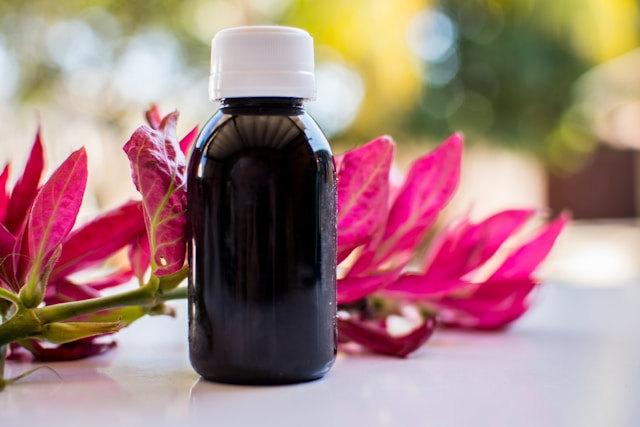Castor oil, a multi-purpose vegetable oil, is derived from the seeds of the castor plant, scientifically called Ricinus communis.
This perennial plant, which is native to the Mediterranean region, is now spread throughout the world in tropical and subtropical regions. Some of the top regions include Africa, Jamaica, India, China, and South America including Haiti.
At present, India tops the charts as the largest manufacturer and supplier of castor oil across the globe. The majority of this oil is sold in world markets, especially in the United States, Europe, and China.
Moreover, it is largely used to produce soap, cosmetics, wax, lubricants, pharmaceuticals, and cooking that often requires petroleum products.
Let’s explore the vital data concerning the extraction of castor oil and where it derives from now.
Ready to discover? Let’s dig in!
Where Does Castor Oil Come From?
The castor oil is derived from the castor seeds containing around 30 to 50% of the oil. The oil may be obtained through the process of either cold pressing of the castor seeds or solvent extraction.
Now, let us examine in detail how castor seeds are obtained.
Harvesting Castor Seeds
In the seed harvesting process of castor, cutting of the seeds needs to be done with the utmost care in order to prevent doing damage to them. Ricinus communis pods are gathered and cleaned after which the shells are removed and seeds are extracted. Then a few days later, the seed pods grow spikes that are taken manually and dried so that the seeds can be extracted easily.
The beans are then subjected to a drying phase which lasts up to 21 days, and later the pods are cracked open to reveal the seeds. These beans also referred to as castor beans, are then dried out and are separated from the leafy pods. They are processed and cleaned to remove any dirt or impurities.

Extraction Methods
The extraction of castor oil from the seeds can be achieved through two primary methods: cold pressing and solvent extraction. In order to make the oil apart from hydrophilic compounds, centrifugations are carried out.
The seeds are ground and then subjected to endless screw pressing. The extraction of oil from castor seeds can be achieved at a very low temperature. However, this process only yields up to 45% of the oil from the seeds.
The efficiency of extraction may be higher in a warmer environment.
Around 80% of the available oil can be obtained by applying high-temperature hydraulic pressing to extract oil. High-quality and undiluted castor oil can only be extracted by the cold pressing process in which the oil is disengaged from the oil bean shell through pressing. The extraction which is done by using this technique retains the oil’s natural properties and purity. In contrast, it is a slower process though solvent extraction is faster.
Also read: Fish Oil & Women’s Health: Top Benefits You Should Know
However, solvent extraction is a much faster, and efficient method that utilizes chemicals like hexane to pull out the oil from the seeds. However, it yields poor-quality oil with unrefined traces of solvent.
Therefore, cold pressing has been chosen as a preferred means for high-quality castor oil production.
Refining Process
Crude castor oil is produced after the extraction process while the refining procedure helps in eliminating impurities and inconsistencies as well as leads to oil’s quality improvement. To prepare the oil it is first heated and treated with alkali to completely remove the saturated fatty acids that were responsible for the oil to rot.
The final process is the washing and filtering step, where any remaining impurities are removed which is resulting in a clean and refined product.
The oil is then subjected to the refining process and finally gets ready for process in different applications such as pharmaceuticals, cosmetics, and industrial products.
During refining, we separate the impurities that include colloidal particles, phospholipids, and excess FFA, and we remove coloring agents from the oil.
The presence of these undesirable substances is what causes oil to get worse within the time of extended storage. The refining steps include expelling, neutralizing using a strong base like sodium hydroxide, bleaching and deodorizing.
Uses of Castor Oil
The castor oil, which is obtained from the seeds of the castor plant, has a huge array of uses and benefits. The applications of castor oil are not limited to only speaking about its medical uses but extend from one industry to another with its abundance of desirable characteristics.
Let’s learn the top uses of castor oil.
Medicinal Uses
Laxative
Castor oil has been standardly recognized as the natural laxative that cures constipation issues. Basically, it activates the intestines to pass the bowel.
Skin Care
Owing to its ability to hydrate and perhaps even anti-inflammatory activity, castor oil is used in treatment of acne, eczema, and psoriasis. It can aid in relieving irritated skin and lowering inflammation.
Industrial Uses
Soap Production
Due to its ability to form a thick, rich, and creamy foam, it is one of the major components used in the creation of soap. It efficiently functions as a natural skin exfoliator, giving your skin the desired moisturizing effect.
Paints and Dyes
The additive of castor oil in paints and dyes serves in order to improve their flowability and adhesion to the products. In many cases, it is an ingredient that is added to water-based paints and eco-friendly dyes.
Cosmetic Uses
Hair Care
This oil is made of different kinds of fatty acids that not only rejuvenate but also make our hair stronger. It is often used in shampoos and conditioners to prevent hair from cracking and falling.
Eyelash and Eyebrow Growth
When the castor oil is applied on the upper lash line, it helps to stimulate the growth of the broken or thinning hairs. The eyebrow and lash conditioner is mainly used as a naturally based remedy for the treatment of the shortness or the lack of hair on eyelashes and eyebrows.
Final Thoughts
Shortly, castor oil is a real natural resource because of the numerous benefits and uses it contains. Its wide medical applications and usage across different fields, including medical, offers a good reason for a home or industry to have it.
Moreover, it plays an important role in making it more effective for bowel movement and increasing gut health. Another use is for nail and hair care because of its moisturizing properties.
It is also included in the compositions of soaps, paints, and lubricants, among others. As a whole, the glory of this poem is unquestionable. Utilizing castor oil is one of the fastest methods of promoting healthy and sustainable living.


